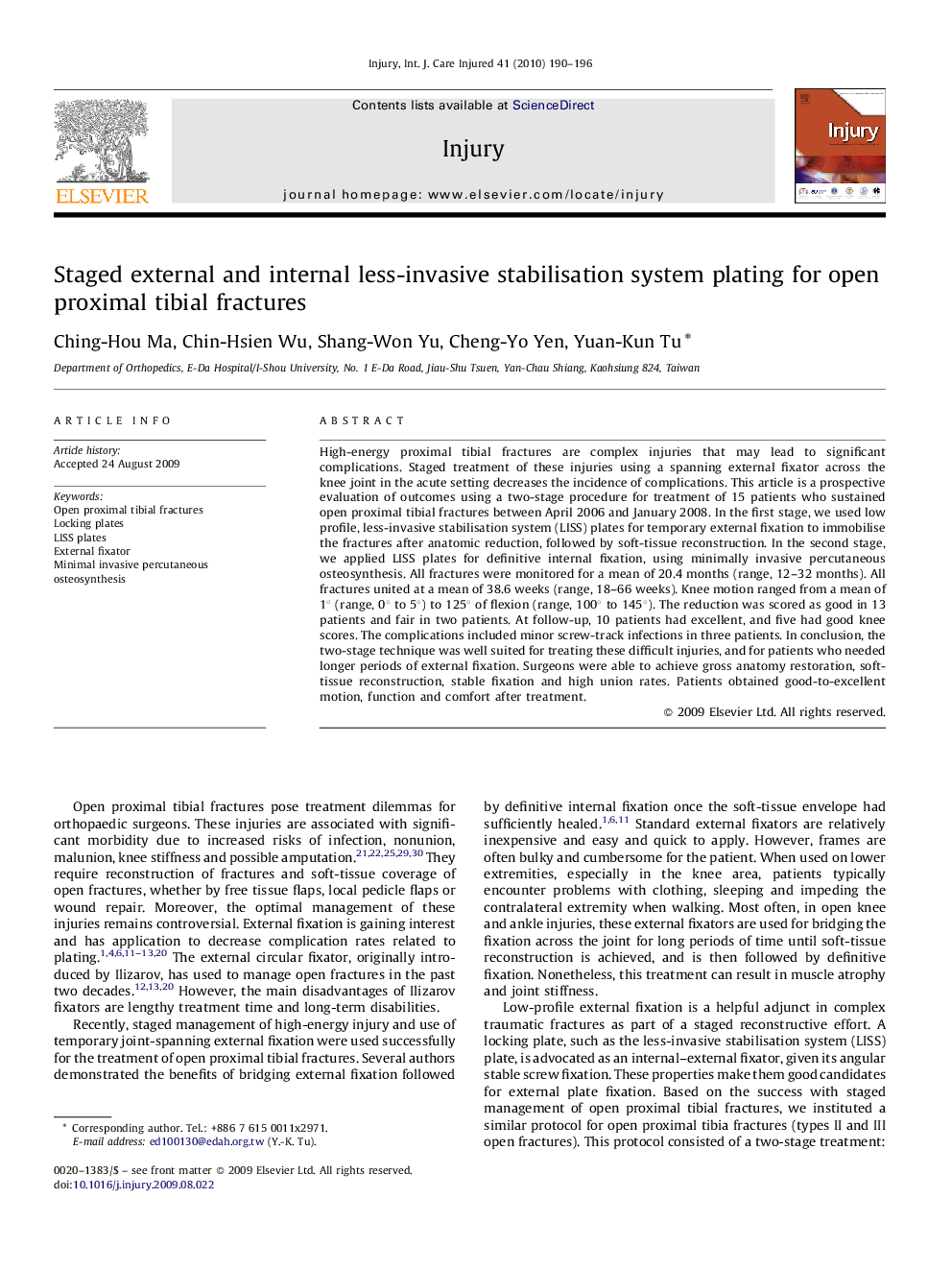| Article ID | Journal | Published Year | Pages | File Type |
|---|---|---|---|---|
| 3241994 | Injury | 2010 | 7 Pages |
High-energy proximal tibial fractures are complex injuries that may lead to significant complications. Staged treatment of these injuries using a spanning external fixator across the knee joint in the acute setting decreases the incidence of complications. This article is a prospective evaluation of outcomes using a two-stage procedure for treatment of 15 patients who sustained open proximal tibial fractures between April 2006 and January 2008. In the first stage, we used low profile, less-invasive stabilisation system (LISS) plates for temporary external fixation to immobilise the fractures after anatomic reduction, followed by soft-tissue reconstruction. In the second stage, we applied LISS plates for definitive internal fixation, using minimally invasive percutaneous osteosynthesis. All fractures were monitored for a mean of 20.4 months (range, 12–32 months). All fractures united at a mean of 38.6 weeks (range, 18–66 weeks). Knee motion ranged from a mean of 1° (range, 0° to 5°) to 125° of flexion (range, 100° to 145°). The reduction was scored as good in 13 patients and fair in two patients. At follow-up, 10 patients had excellent, and five had good knee scores. The complications included minor screw-track infections in three patients. In conclusion, the two-stage technique was well suited for treating these difficult injuries, and for patients who needed longer periods of external fixation. Surgeons were able to achieve gross anatomy restoration, soft-tissue reconstruction, stable fixation and high union rates. Patients obtained good-to-excellent motion, function and comfort after treatment.
